Do you want to get inspired and looking for some great reads to fit in before the new year? Our NZCER researchers have their top recommendations for your summer reading, listening and viewing.

Rachel's
Games for Learning
Top 5

1. The Minecraft Generation: How a clunky Swedish computer game is teaching millions of children to master the digital world.
An article by Clive Thompson for the New York Times.
A great article for getting your head around the rich potential of “sandbox” game environments like Minecraft, and what can happen when young people have time to explore, experiment, and problem-solve their way through an environment that allows almost infinite possibilities. Whether you’re already quite familiar with Minecraft, or just a beginner, I’m fairly sure you’ll find at least one new interesting angle that you hadn’t thought about before.
Type: Online article
Have a read: http://www.nytimes.com/2016/04/17/magazine/the-minecraft-generation.html?_r=0
2. Ready Player One
 Ernest Cline
Ernest Cline
This is an easy summer read, set in a dystopian near future where people escape the bleak realities of the world in a virtual reality world called the OASIS. The story is heavily packed with references to videogame culture, with particular reference to classic games and pop culture from the 1980s. If you’re a gamer, or the 80s were your formative years you’ll enjoy the nostalgia kick. If you’re not, this novel may give you a perspective on the inner lives of gamers and why games are so compelling! The book is suitable for teens and young adult readers. (You may want to read it first before sharing with younger readers - contains mild adolescent sexuality and language). It’s also being made into a film, due out in 2018.
Type: Novel
3. Extra Credits

I stumbled onto this great animated Youtube series when I was first starting to get into game design. “Extra Credits” aims to makes video game design approachable. Whether you are an aspiring young developer, a teacher, a student, or anyone else, you’ll find videos here that might make you go “a-ha” or “so that’s what gamification means!” or “no wonder making my first game took so much longer than I expected it to!”. For total beginners, I’d recommend starting with the Education in Games playlist, but many of my favourites are in the Game Design playlist (e.g. Fail faster).
Type: Youtube video series
Watch: https://www.youtube.com/user/ExtraCreditz
4. Feminist Frequency: Tropes vs Women in video games

I’m a huge fan of Anita Sarkeesian’s well-researched, interesting video series which “aims to examine limiting, sexist patterns associated with female representations in games, and to illuminate how these patterns reinforce and perpetuate harmful attitudes about women in our culture”. Sarkeesian, a longtime gamer and engaging presenter, has been the target of all sorts of online and offline harassment for her work, which just goes to show how important it is to be able to have better conversations about some of the more problematic aspects of games and gaming culture. In every video, she reminds viewers that it’s possible to enjoy the games and other media we consume, while also critiquing them. Each episode is about 20-25 minutes long and illustrates ideas with footage from all sorts of videogames. This could be a great resources for discussions with mature secondary students. (Note: Some episodes contain graphic content and discussions about sexual violence).
Type: Video series
Watch: https://feministfrequency.com/tag/tropes-vs-women-in-video-games/
5. Games for learning
This blog shares emerging findings from NZCER’s Games for Learning project which seeks to foreground the experiences of New Zealand teachers and learners as game players, game selectors, or game makers. Our project aims to better understand how these users/players think about games in relation to learning, what personal and pedagogical choices they make when games are used in learning environments, and what happens in the learning environment when games are part of the picture. Feel free to post comments on the blog and keep reading as we continue to add new posts through 2017!
Type: Blog
Read the blog
Meet Rachel Bolstad
 Mat's
Mat's
Aotearoa + Grit
Top 5
1. The Great War for New Zealand
Waikato 1800–2000
Vincent O'Malley

“A monumental new account of the defining conflict in New Zealand history. It was war in the Waikato in 1863–64 that shaped the nation in all kinds of ways: setting back Māori and Pākehā relations by several generations and allowing the government to begin to assert the kind of real control over the country that had eluded it since 1840.
Spanning nearly two centuries from first contact through to settlement and apology, Vincent O’Malley focuses on the human impact of the war, its origins and aftermath. Based on many years of research and illustrated throughout, The Great War for New Zealand is a groundbreaking book written in the conviction that a nation needs to own its history.”
– quote from http://bwb.co.nz/books/great-war-new-zealand
Type: Novel
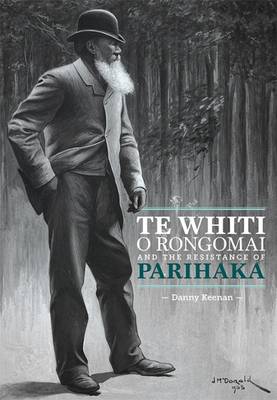
2. Te Whiti O Rongomai and the Resistance of Parihaka
Danny Keenan
“This is an account of the life and times of Te Whiti O Rongomai set against the politics and Crown policies of the nineteenth century. It traces the forces that shaped his life’s journey from Ngā Motu, where he was born, to his settling at Parihaka and his evolving sense of the injustices and disempowerment Māori experienced and his response to these.”
– quote from http://www.huia.co.nz/huia-bookshop/bookshop/te-whiti-o-rongomai-and-the-resistance-of-parihaka/#readmore
Type: Novel
3. MĀORI MADE EASY
For Everyday Learners of the Maori Language
Scotty Morrison
“Fun, user-friendly and relevant to modern readers, Scotty Morrison's Maori Made Easy is the one-stop resource for anyone wanting to learn the basics of the Maori language.
While dictionaries list words and their definitions, and other language guides offer common phrases, Maori Made Easy connects the dots, allowing the reader to take control of their learning in an empowering way. By committing just 30 minutes a day for 30 weeks, learners will adopt the language easily and as best suits their busy lives.
Written by popular TV personality and te reo Maori advocate Scotty Morrison, author of The Raupo Phrasebook of Modern Maori, this book proves that learning the language can be fun, effective — and easy!”
– quote from http://penguin.co.nz/books/maori-made-easy-9780143570912
Type: Resource
4. Teaching social studies for critical, active citizenship in Aotearoa New Zealand
 Edited by Michael Harcourt and Bronwyn Wood and Andrea Milligan
Edited by Michael Harcourt and Bronwyn Wood and Andrea Milligan
Social studies education plays a critical role in developing young people as active and engaged citizens in uncertain, complex times. This edited collection presents the latest research, ideas and practice in the social studies learning area in Aotearoa New Zealand. The writers challenge educators and policy makers to think deeply about the purpose of social studies and its transformative potential for citizenship education. They offer a direct challenge to the idea that social studies education is about preparing students to fit easily and uncritically into existing society – and suggest as alternative that social studies can support learners to critically navigate and take action in society during their time at school and in their futures.
This book is essential reading for teachers working with the core social studies learning area for Years 1–10, as well as the optional subject and related social science subjects from Years 11–13. It will also be of interest to policy makers, government and resource developers.
Type: Novel
Purchase on our website
5. Grit: The power of passion and perseverance
Angela Duckworth
“In this instant New York Times bestseller, pioneering psychologist Angela Duckworth shows anyone striving to succeed—be it parents, students, educators, athletes, or business people—that the secret to outstanding achievement is not talent but a special blend of passion and persistence she calls “grit.”
Why do some people succeed and others fail? Sharing new insights from her landmark research, Angela explains why talent is hardly a guarantor of success.
Angela has found that grit—a combination of passion and perseverance for a singularly important goal—is the hallmark of high achievers in every domain. She’s also found scientific evidence that grit can grow.
Angela gives a first-person account of her research with teachers working in some of the toughest schools, cadets struggling through their first days at West Point, and young finalists in the National Spelling Bee. She also mines fascinating insights from history and shows what can be gleaned from modern experiments in peak performance. Finally, she shares what she’s learned from interviewing dozens of high achievers—from JP Morgan Chase CEO Jamie Dimon to Seattle Seahawks Coach Pete Carroll.”
– quote from http://angeladuckworth.com/grit-book/
Type: Novel
Meet Mat Mullany

Teresa's
Play-based Learning
Top 5
1. “What 3 to 7 year olds need to learn"
Nathan Mikaere-Wallis
 In his regular chat with Kathryn Ryan on Nine to Noon, parenting expert and commentator Nathan Mikaere-Wallis, from X Factor Education in Christchurch, discusses the developmental needs of young students, both at home and at school. He focuses on social and emotional skills and how students in this age group need to learn to see themselves as successful learners and to develop their divergent thinking rather than more formal learning. He talks about the importance of placing value on open-ended questions and unstructured creative play in these early years.
In his regular chat with Kathryn Ryan on Nine to Noon, parenting expert and commentator Nathan Mikaere-Wallis, from X Factor Education in Christchurch, discusses the developmental needs of young students, both at home and at school. He focuses on social and emotional skills and how students in this age group need to learn to see themselves as successful learners and to develop their divergent thinking rather than more formal learning. He talks about the importance of placing value on open-ended questions and unstructured creative play in these early years.
Type: Radio Broadcast
Listen: http://www.radionz.co.nz/national/programmes/ninetonoon/audio/2595176/what-3-to-7-year-olds-need-to-learn-nathan-mikaere-wallis
2. Powerful Play: Continuity and Inquiry for Children Starting School

In this blog, Keryn Davis, from CORE Education writes about the importance of play when children are transitioning from ECE to school. She touches on many of the same points that Nathan Mikaere-Wallis does, but this time from the teacher’s point of view. [Note - the links at the bottom of the page do not work due to changes on the MOE website.]
Type: Blog
Read the blog
3. Free to Learn
Peter Gray
I’ve just downloaded this book, for free, onto my Kindle. It comes highly recommended and Peter has written many articles for Psychology Today about the importance of play: Play Makes Us Human I: A Ludic Theory of Human Nature, The Value of Play I: The Definition of Play Gives Insights, The Value of Play II: How Play Promotes Reasoning to list just a few.
Type: Book and articles
Download Free to Learn
4. Hudson Valley Sudbury School
These videos from an alternative school in the USA show the power of self-directed learning. There are interviews with parents, teachers, current students and ex-students of the school. Peter Gray makes references to this school in his writing.
Type: Video
Watch: sudburyschool.com/video
5. Learning Through Play

This New Zealand based group has been set up to discuss ideas, research and the practice of Play in Education. This Facebook group was set up as a result of a blog by a teacher who started a journey into play-based learning and was recording her experiences. It has nearly 3,000 followers and is a great resource for anyone interested in play-based learning. Many articles and videos are posted as well as links to professional development opportunities. It is a useful place to go if you have any questions about starting play-based learning or if you want to visit schools that are implementing play-based learning.
Type: Facebook Group
Join: https://www.facebook.com/groups/505280046303113/
Meet Teresa Maguire

Elliot's
Creative
Top 5
1. The kids should see this .com
“There’s just so much science, nature, music, art, technology, storytelling and assorted good stuff out there that my kids (and maybe your kids) haven’t seen. It’s most likely not stuff that was made for them…
But we don’t underestimate kids around here.
Search & enjoy 2,700+ smart & super-cool, “not-made-for-kids, but perfect for them” videos in the classroom or together at home, curated by Rion Nakaya with her 6 & 8 year olds.”
– quote from http://thekidshouldseethis.com/
Type: Website
Check it out: http://thekidshouldseethis.com/
2. The Slow Mo Guys
“On this channel, Gavin Free and Dan Gruchy take a $150,000 high speed camera to show you the world hundreds of times slower than you can see with your own eyes. You should subscribe. It's pretty cool.”
– quote from https://www.youtube.com/user/theslowmoguys
Type: Youtube video series
Watch: https://www.youtube.com/user/theslowmoguys
3. Cool Tools
“Cool Tools is a web site which recommends the best/cheapest tools available. Tools are defined broadly as anything that can be useful. This includes hand tools, machines, books, software, gadgets, websites, maps, and even ideas. All reviews are positive raves written by real users. We don’t bother with negative reviews because our intent is to only offer the best.
One new tool is posted each weekday. Cool Tools does NOT sell anything. The site provides prices and convenient sources for readers to purchase items.
When Amazon.com is listed as a source (which it often is because of its prices and convenience) Cool Tools receives a fractional fee from Amazon if items are purchased at Amazon on that visit. Cool Tools also earns revenue from Google ads, although we have no foreknowledge nor much control of which ads will appear.”
– quote from http://kk.org/cooltools/about/
Type: Website
Check it out: http://kk.org/cooltools
4. Abandonedography .com
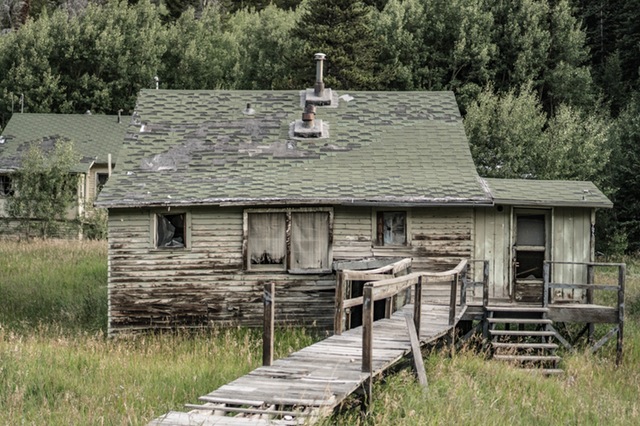
A web gallery for abandoned photography and art.
Type: Website
Check it out: http://abandonedography.com/
5. Meet Bob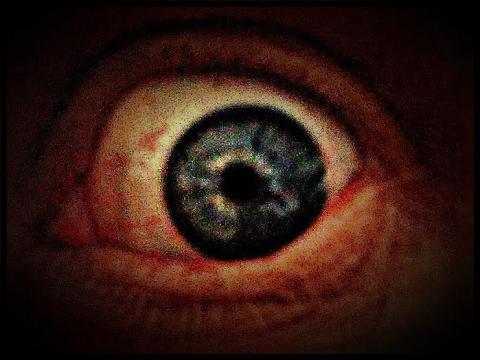
“Meet Bob. Bob is a floating eyeball with a hard luck story he's dying to tell you. Are you willing to listen?” – quote from ‘Meet Bob’.
This blog post is part of an on-going series of posts about Games for Learning by the project’s research team. It explores the world of games in the classroom and how students and teachers view student expertise in game-related activities .
Type: Blog
Read the blog
Meet Elliot Lawes

PTS's
Top 5
1. Quiet: The Power of Introverts with Susan Cain
Susan Cain’s first book on introversion has sold 2 million copies and was featured on many of 2012’s best-of book lists. This year she has followed that success up with a co-authored book Quiet Power: The Secret Strengths of Introverts and a complementary podcast that works to enable parents and educators to help empower quiet kids. Covering a wide range of topics and featuring a multitude of guests, from educators and psychologists to sports players and even actress Molly Ringwald, this podcast is an approachable and enjoyable resource for everyone.
Type: Podcast
Listen: www.quietrev.com/susan-cain-quiet-podcast/
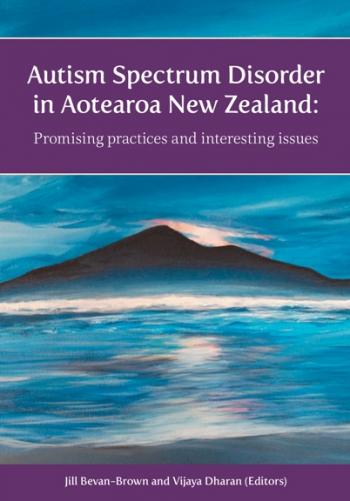
2. Autism spectrum disorder in Aotearoa New Zealand: Promising practices and interesting issues
Jill Bevan-Brown and Vijaya Dharan
Taking out the award for Best Resource in Higher Education at this year’s NZ Content Counts Awards, this book is an invaluable resource for teachers and educators looking to learn more about ASD. With a strong Aotearoa focus, the wide range of contributors give a practical and eye-opening compendium of strategies for creating more inclusive spaces for children with ASD.
Type: Novel
Purchase on our website
3. Dyscalculia Guidance
Publisher: GL Assessment
Authored by Brian Butterworth (a leading expert in dyscalculia) and Dorian Yeo, this book offers practical guidance for teachers and SENCOs on how to support students with dyscalculia, an often unnoticed and misunderstood learning difficulty. Focusing on the experience of the student, this book helps teachers and parents better understand their child’s needs and difficulties. It includes specific teaching strategies shown to be effective and photocopiable material for use in the classroom.
Type: Novel
Purchase on our website
4. The problem with p-values
David Colquhoun
If you read research or work anywhere close to psychology, you are probably vaguely familiar with p-values and the power they hold in academic research. Often the difference between being published or not, this value is poorly understood and is currently the subject of a lot of controversy, especially in medical and psychological research. This article by David Colquhoun is a more accessible follow-up to his dense 2014 academic article and helps readers understand p-values better and where their use may be problematic (and where it may not be).
Type: Article
Read it: aeon.co/essays/it-s-time-for-science-to-abandon-the-term-statistically-significant
5. The Three Christs of Ypsilanti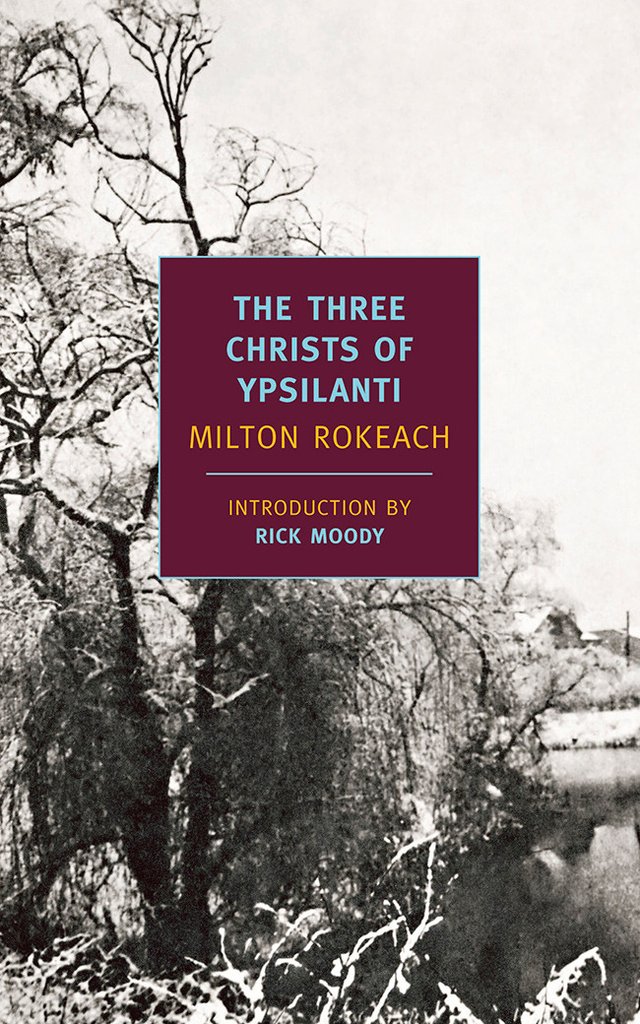
Milton Rokeach, introduction by Rick Moody
In 1959 Milton Rokeach brought three men together in a state hospital in Michigan for a fascinating and wholly unethical piece of psychological research. These three schizophrenic men shared one commonality: They all believed themselves to be Jesus Christ. Originally released in 1964, this book presents the case notes of their two years together. What allows this book to rise above a morbid curiosity or a historical testament, however, is Rokeach’s empathetic prose. As the book unfolds Rokeach is able to meditate on questions of how humans develop and sustain their identities and what happens when you challenge their deepest beliefs about the world.
Type: Novel
Check it out: www.nyrb.com/products/the-three-christs-of-ypsilanti?variant=1094932661

Sue's
reading, writing,
reviewing and publishing
Top 5
1. Poetry box: A New Zealand poetry page for children
I wish something like Poetry box had been around when I was a teacher. It’s a poetry site for children set up by Auckland poet Paula Green. Here she publishes poems and reviews of poetry books written by New Zealand children, along with her own poems, and blogs about reading, writing, and reviewing.
Type: Website
Take a look: https://nzpoetrybox.wordpress.com/
2. Hooked on NZ books He Ao Anō
I love this site. Hooked on NZ books He ao anō is a website designed for teenagers interested in reading and writing reviews of New Zealand books. What’s so great about this site is the way it foregrounds the professional expertise involved in reviewing. Reviewing is presented as an intellectually rigorous and critical endeavour as opposed to the traditional school exercise of producing plot summaries as evidence of having read the book:
Anyone can say “I loved this book”, or “I hated that book”, but it’s much harder to say why. Reviewing is important because well-argued reviews can influence what gets published and what gets read. Your voice can make a difference.
It’s where you can become part of a critical conversation
Hooked on NZ books He ao anō provides information on how to write a “smart, interesting book review” for publication. It has archives of reviews written by Young Adult readers and professional reviewers. It has opportunities to add comments, suggest topics for discussion, and read the opinions of other young people. There are even free books available for teenagers to review and opportunities to interview authors of Young Adult fiction.
The site is run by a group of writers and editors involved with the print journal New Zealand Books Pukapuka Aotearoa, which is a print journal devoted to reviewing New Zealand books.
Type: Website
Take a look: http://www.hookedonbooks.org.nz/
3. Literacy, place, and pedagogies of possibility
Barbara Comber
I have recently read this inspiring book about literacy and pedagogies of place by Australian academic and researcher Barbara Comber. In this book she draws on several decades of collaborative research with Australian teachers as they work with children to produce “culturally significant artefacts that represent complex and contested ideas about place and identity”. These artefacts include films, stories, community maps, playground equipment, and interviews. Barbara Comber is motivated by questions of social justice and describes the need to produce “more complex accounts of teachers’ work…in order to avoid reductive, minimalist versions of literacy pedagogy, which are becoming the norm, or worse still, mandated for teachers in poor communities”. She is especially interested in the opportunities for togetherness provided by the school.
A major plus for learning at school is the rich diversity of cultural and linguistic resources in most classrooms; yet if children are required to work alone on displaying literate practices with no social consequences beyond the self, we have missed one of the greatest affordances of schooling: namely, the capacity to work, learn, play and imagine together.
Type: Book
Reference: Comber, B. (2016). Literacy, place, and pedagogies of possibility. New York: Routledge
4. Why reading literature in school still matters
Dennis Sumara
Reading Literacy, place, and pedagogies of possibility reminded me of an old favourite, Why reading literature in school still matters, and prompted me to re-read it over the summer. Like Barbara Comber, Dennis Sumara is interested in the coming together of diverse people and ideas around a shared text in a common space. He borrows the idea of the “Commonplace Book” from the novel The English Patient to describe how texts that are read communally can become a metaphorical meeting place – a common reference point. He also uses this term to describe the way in which on re-reading a text we return to a place common to us, and how (especially if we have left annotations on that text from earlier readings) we may meet with – and so be reminded of – an earlier sense of ourselves. Denis Sumara argues that the spaces between different interpretations provide a rich, interpretive site with opportunities for personal and collective experience, and deep, purposeful insight.
Type: Book
Reference: Sumara. D. (2002). Why reading literature in school still matters: Imagination, interpretation, insight. New Jersey: Lawrence Erlbaum Associates.
5. Integrating critical multiliteracies using the Four Resources Model:
A New Zealand Guide
Dr Jane Tilson and Dr Susan Sandretto
If you are interested in trying some of the critical literacy ideas raised in books like Barbara Comber’s, but don’t know where to start then take a look at Integrating critical multiliteracies using the Four Resources Model. This new resource published by NZCER Press is based on findings from New Zealand literacy research and brings together exemplars of classroom practice with current literacy theories. It provides a video that features a series of critical multiliteracies lessons with Year 1-2 and Year 8 classes, includes reflective interviews with the teachers involved, discussion starters, and support material.
Type: Resource
Reference: Tison, J. & Sandretto, S. (2016). Integrating critical multiliteracies using the Four Resources Model. Wellington: NZCER Press.
Purchase on our website
Meet Sue McDowall